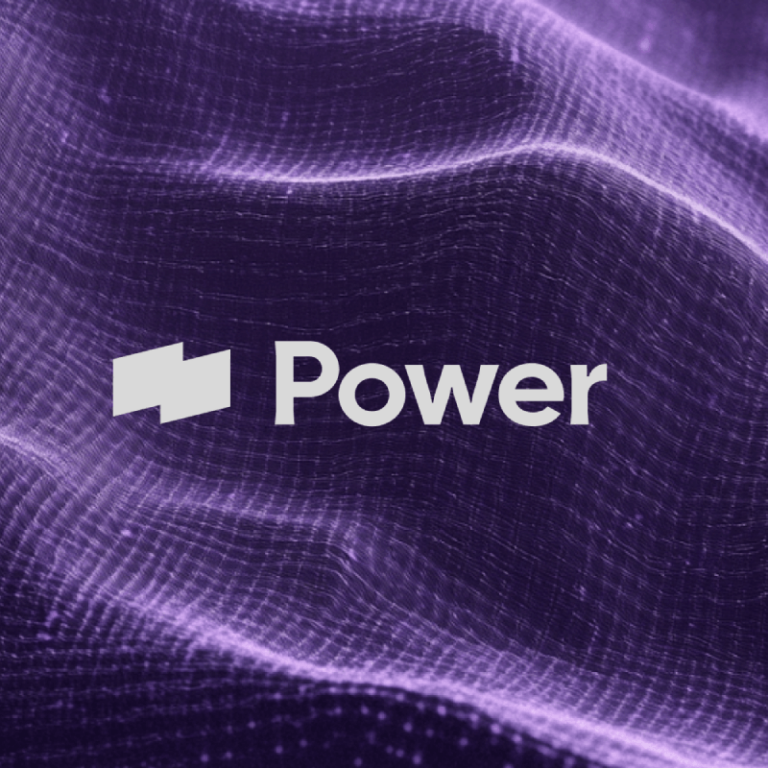With Instagram’s recent algorithm updates, brands have more to leverage within their influencer marketing services. Rather than solely measuring the engagement on an influencer’s social media post by looking at the likes and comments, brands are now able to ask the influencer to provide them with impression metrics, giving them further insight into the engagement the sponsored post generated, the impact it had on their audience, and the overall success of the influencer’s post. In other words, which influencers within their network are meeting the brand’s success metric goals.
Brands are pivoting their influencer campaigns, and implementing this analytics requirement to further show the value of each sponsored partnership and how influencers are directly impacting their bottom line. However, these metrics are only presented to influencers who meet two requirements: they must have their Instagram account set up as a business profile and they must have over 10,000 followers. If an influencer meets these requirements, Instagram’s impression feature automatically provides them with metrics to support each Instagram post and Instagram story that goes live on their account.
Related: How to Perfect Your Influencer Marketing Strategy
The metrics that automatically generate data may seem pretty self-explanatory, but what do they really mean and how are they showing the brand a larger impact within each influencer partnership? Let’s take a closer look at the metrics you should be asking your influencers for.
Instagram Photo Metrics
Impressions
The number of impressions on an Instagram photo represent the number of times your content is displayed on an Instagram feed, regardless if the post was engaged with or not. An impression means that the content posted was delivered to ‘x’ amount of users’ Instagram feed. This metric is difficult to measure without the analytics provided by Instagram and it’s important that brands have access to this information to accurately evaluate the performance of each post.
Overall Reach
Overall reach is the total number of people who are seeing the Instagram influencer’s content on Instagram. Although many users may think that all their followers see the content they post, that’s no longer the case with Instagram’s algorithm updates. Each post shared by a social media influencer only reaches a portion of their followers, and it’s important to see this metric to identify how many users are actually seeing the content each influencer posts on social media.
Likes/Comments
This metric is one that each Instagram user has access to, as the number of likes and comments are clearly shown on each Instagram post. However, by presenting these metrics alongside the other impression metrics, it allows both the influencer and the brand to see how many people engaged with the content versus the number of impressions the post received.
Image Saves
This feature allows the influencer and the brand to see how many viewers flagged the photo and saved the image onto their profile. This is unique because it shows that users are saving the post so they can revisit it at another time.
Instagram Story Metrics
Impressions
Similarly to the impressions on an Instagram photo, this metric for Instagram Stories represent the number of times the Instagram Story is displayed on a user’s Instagram feed, regardless if he or she clicked and watched the story. An impression means that the content posted was delivered to ‘x’ amount of users’ Instagram feed.
Viewers
This metric represents the number of users who clicked onto the influencer’s Instagram Story and watched the post. The number of viewers can vary on each Instagram Story, regardless if there are multiple Stories posted in a sequence because users can close the Story at any point. The viewers metric on Instagram Stories is similar to the overall reach metric on Instagram posts because it shows the number of users that saw the content that was posted.
Replies
The “Replies” metric within Instagram’s insights gives the influencer an idea of how many people responded to the influencer’s Story. Instead of engagement metrics on Instagram posts such as the number of likes and comments on each post, this is a way for influencers to see the engagement metrics on their Instagram Stories. Think of it in terms of this: one reply on an Instagram Story is like one comment on an Instagram post. Whether it’s a user asking a question or making a general comment, this metric shows that users are engaging with an influencer’s Instagram Story.
Sticker insights
Sticker insights represent the number of viewers that are clicking onto the tags within each Instagram Story. For example, if an influencer tags a brand’s Instagram account “@xyz” within their Instagram Story, and one of their followers clicks on that tag and visits the tagged Instagram account, that metric accounts for one sticker insight. This is important because it shows the influencer and the brand how many people are not only viewing their stories, but engaging within them and visiting the brand’s social media accounts.
Link Opens
This metric is arguably the most important Instagram Story metric, as it represents the number of users that are clicking the link within an influencer’s story and visiting the brand’s website. The link open metric shows brands that not only are influencers driving users back to their social media accounts, but they are driving users back to their website where they are more likely to convert.
Related: FTC Regulations: How Are Brands Still Breaking The Rules
In addition, if the brand creates a custom UTM link for each influencer to include as the link within their Story, the brand can then go into Google Analytics and see more granular metrics about the traffic driven to the website, including: how many of the visitors were new users, how much time each visitor was spending on the website, and whether or not a transaction was completed.
While these core metrics are essential, there are additional key indicators that can take your influencer marketing strategy to the next level. Let’s explore them.
Beyond the Basics: Additional Influencer Metrics You Should Track
While engagement rates, reach, and impressions are crucial influencer marketing metrics, there are several overlooked yet powerful indicators that can give you a clearer picture of your campaign’s impact. These advanced influencer metrics help refine strategy, optimize ROI, and ensure your partnerships are truly driving results.
1. Audience Growth: Are You Gaining More Followers?
One of the key benefits of influencer collaborations is their ability to introduce your brand to new audiences. If your brand’s social following isn’t increasing after an influencer campaign, it might be a sign that the content isn’t resonating.
How to track it:
- Compare your follower growth before, during, and after an influencer campaign.
- Use social media analytics tools like Instagram Insights or Sprout Social to monitor spikes in new followers.
- Pay attention to which influencers drive the most sustained audience growth.
Pro Tip: Beyond just numbers, look at the quality of new followers—are they engaging with your brand, clicking links, or converting into customers?
2. Brand Mentions: Are People Talking About You?
Influencer campaigns aren’t just about immediate clicks and conversions—they should also increase your brand’s visibility across different social platforms. Brand mentions help measure the organic buzz created by an influencer partnership.
How to track it:
- Use social listening tools like Brandwatch or Mention to monitor how often your brand name appears in conversations.
- Track hashtags, tagged posts, and even indirect references to your brand.
- Compare brand mentions before and after influencer partnerships to gauge impact.
If an influencer is driving a lot of brand chatter, consider extending your partnership with them or repurposing their content for your own channels.
3. Share of Voice: Are You Gaining Industry Authority?
Share of voice (SOV) measures how much of the conversation in your industry is focused on your brand versus competitors. A well-executed influencer campaign should help you gain visibility and credibility in your niche.
How to track it:
- Compare the number of times your brand is mentioned versus competitors.
- Use social media listening tools to assess your brand’s presence in key industry conversations.
- Look at how influencer partnerships impact your brand’s authority over time.
Why It Matters: A high share of voice means your brand is being seen as a leader in your space, making customers more likely to trust and choose you over competitors.
4. Website Traffic from Influencer Campaigns
Likes and shares are great, but are influencer campaigns actually driving people to your website? Monitoring traffic from influencer-generated content helps determine whether partnerships are translating into real business value.
How to track it:
- Use UTM tracking links in influencer posts to measure website traffic driven by their content.
- Check Google Analytics under “Acquisition” → “Social” to see traffic coming from influencer-related posts.
- Look at bounce rates and time on page—are users engaging with your content, or are they leaving immediately?
Optimization Tip: If influencers are sending traffic but conversions remain low, consider testing different landing pages, clearer CTAs, or exclusive influencer discounts.
5. Conversions & Sales: Are Influencers Driving Purchases?
At the end of the day, the true success of an influencer campaign comes down to conversions—whether that means sales, sign-ups, or downloads.
How to track it:
- Assign discount codes or affiliate links to influencers to track direct purchases.
- Set up conversion tracking in Google Analytics to measure actions taken after users land on your site.
- Use post-purchase surveys to ask customers how they heard about your brand.
Pro Tip: If an influencer isn’t driving conversions, they may not be the right fit for your audience. Testing different types of content—such as product tutorials or behind-the-scenes storytelling—can help boost effectiveness.
6. Audience Demographics: Are You Reaching the Right People?
An influencer might have a massive following, but if their audience doesn’t align with your target market, the partnership won’t deliver long-term value. Understanding who an influencer reaches is just as important as how engaged they are.
How to track it:
- Request audience insights from influencers, including age, location, interests, and buying behavior.
- Use social media analytics to see how your brand’s audience shifts after influencer collaborations.
- Compare demographics of new followers to your ideal customer profile.
Make Data-Driven Decisions for Better ROI
By expanding beyond basic engagement metrics and tracking audience growth, brand mentions, share of voice, website traffic, conversions, and audience demographics, you can build more strategic influencer campaigns that truly drive results.
How Can Brands Leverage These Metrics?
Brands are able to leverage these metrics by requesting that each influencer that meets the two requirements—Instagram account set up as a business profile and has over 10,000 followers— send a screenshot or a document combining their post’s performance metrics. By requesting these analytics at the beginning of the marketing campaign, this incentivizes the influencer to optimize their post so it can receive the highest amount of engagement.
This also allows brands to compare each influencer’s performance metrics to see which influencer’s post had the biggest impact on their audience and hitting their influencer marketing goals in terms of total reach and engagement. However, something for brands to keep in mind is that if influencers are sending a document rather than a direct screenshot, the metrics may have been tampered with. Regardless, these metrics show the brand more movement from their influencer marketing campaigns rather than solely measuring the number of likes and comments on each post.
Want to make sure you’re measuring the right influencer metrics for your brand? Reach out to our team at Power Digital Marketing, and let’s optimize your influencer strategy together.







